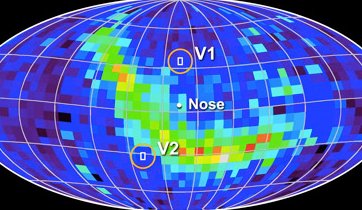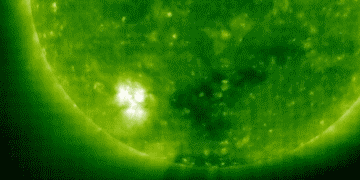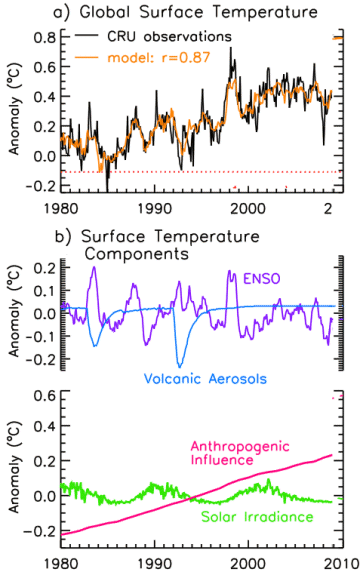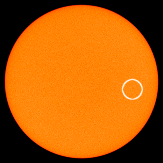For years, researchers have known that the solar system is surrounded by a vast bubble of magnetism. Called the "heliosphere," it springs from the sun and extends far beyond the orbit of Pluto, providing a first line of defense against cosmic rays and interstellar clouds that try to enter our local space. Although the heliosphere is huge and literally fills the sky, it emits no light and no one has actually seen it. Until now.
NASA's IBEX (Interstellar Boundary Explorer) spacecraft has made the first all-sky map of the heliosphere and the results have taken researchers by surprise. The map is bisected by a bright, winding ribbon of unknown origin:
"This is a shocking new result," says IBEX principal investigator Dave McComas of the Southwest Research Institute. "We had no idea this ribbon existed--or what has created it. Our previous ideas about the outer heliosphere are going to have to be revised."
The two Voyager spacecraft (labeled V1 and V2 in the figure) have spent decades traveling to the edge of the solar system for in situ inspection of whatever might be there--but ironically both spacecraft missed the ribbon. "It's like having two weather stations, but missing the big storm that runs between them," says Eric Christian, IBEX deputy mission scientist at NASA's Goddard Space Flight Center.
At the moment, theorists are "working like crazy" to understand this discovery and how the ribbon might effect the ability of the heliosphere to shield us from cosmic rays. Science@NASA has the full story.





